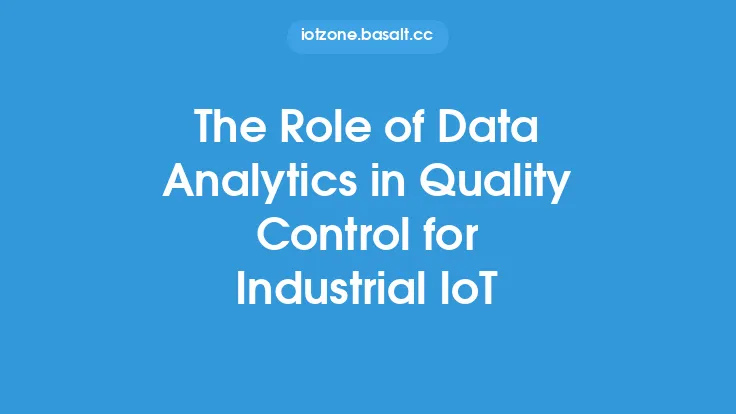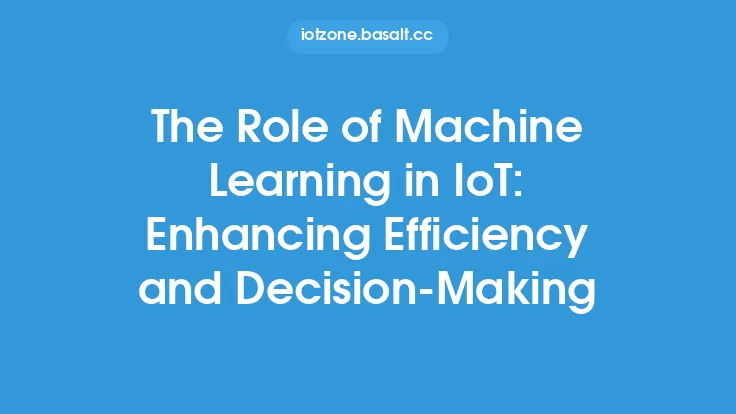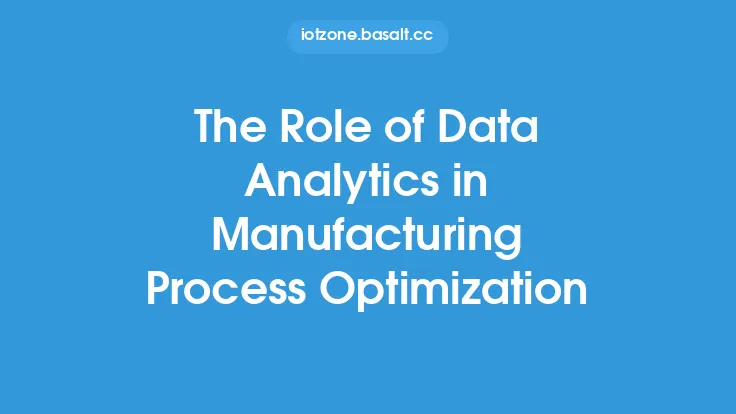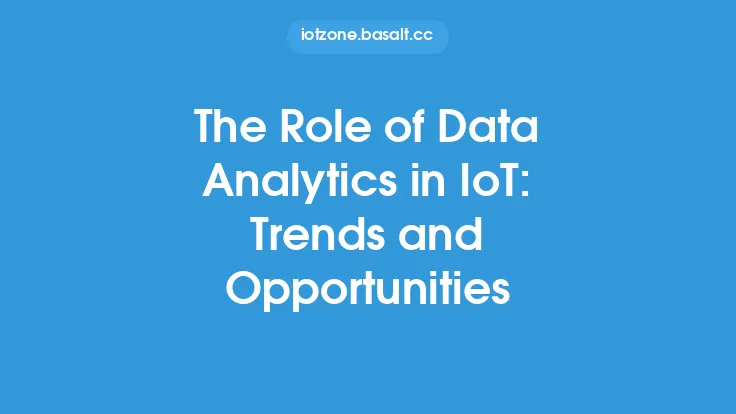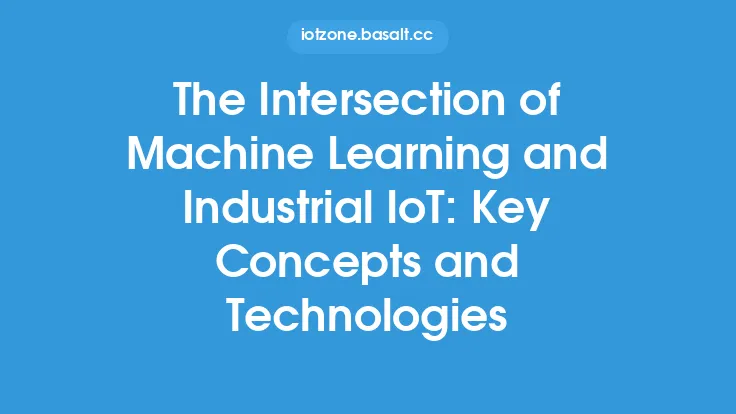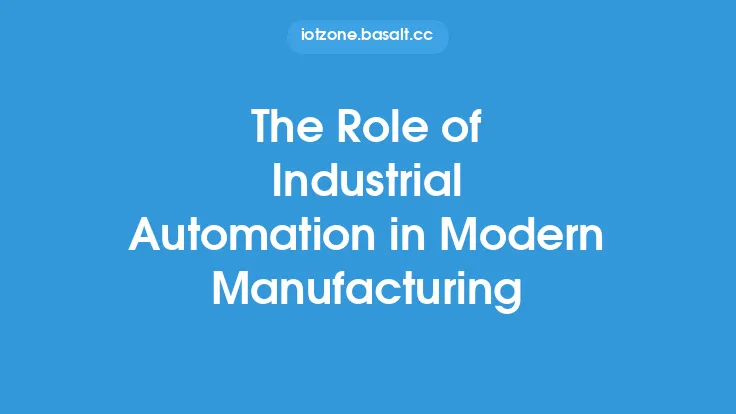The increasing use of Industrial Internet of Things (IIoT) devices has led to an explosion of data being generated in industrial settings. This data can come from a variety of sources, including sensors, machines, and other devices, and can be used to gain insights into the performance and efficiency of industrial operations. However, the sheer volume and complexity of this data make it difficult to analyze and extract meaningful insights using traditional methods. This is where machine learning comes in, as a key technology for analyzing and making sense of IIoT data.
Introduction to Machine Learning in IIoT
Machine learning is a subset of artificial intelligence that involves training algorithms to learn from data and make predictions or decisions based on that data. In the context of IIoT, machine learning can be used to analyze data from sensors and devices to predict equipment failures, optimize production processes, and improve overall efficiency. Machine learning algorithms can be trained on historical data to identify patterns and trends, and can then be used to make predictions about future performance. This can help industrial organizations to anticipate and prevent problems, rather than simply reacting to them after they occur.
Types of Machine Learning Algorithms Used in IIoT
There are several types of machine learning algorithms that can be used in IIoT data analysis, including supervised learning, unsupervised learning, and reinforcement learning. Supervised learning algorithms are trained on labeled data, where the correct output is already known, and can be used for tasks such as predictive maintenance and quality control. Unsupervised learning algorithms, on the other hand, are trained on unlabeled data and can be used for tasks such as anomaly detection and clustering. Reinforcement learning algorithms are trained by interacting with an environment and receiving feedback in the form of rewards or penalties, and can be used for tasks such as optimizing production processes.
Data Preprocessing and Feature Engineering
Before machine learning algorithms can be applied to IIoT data, the data must be preprocessed and feature engineering must be performed. Data preprocessing involves cleaning and transforming the data into a format that can be used by machine learning algorithms. This can include handling missing values, removing outliers, and normalizing the data. Feature engineering involves selecting and transforming the most relevant features from the data, in order to improve the performance of the machine learning algorithm. This can include techniques such as feature scaling, feature selection, and dimensionality reduction.
Machine Learning Techniques for Time Series Analysis
Many IIoT applications involve analyzing time series data, which is data that is collected over time. Machine learning techniques such as autoregressive integrated moving average (ARIMA) models, exponential smoothing (ES) models, and long short-term memory (LSTM) networks can be used for time series analysis. These techniques can be used to forecast future values, identify trends and patterns, and detect anomalies in the data. For example, ARIMA models can be used to forecast future values of a time series, while LSTM networks can be used to identify complex patterns in the data.
Deep Learning Techniques for IIoT Data Analysis
Deep learning techniques such as convolutional neural networks (CNNs) and recurrent neural networks (RNNs) can also be used for IIoT data analysis. These techniques can be used to analyze complex data such as images and audio, and can be used for tasks such as predictive maintenance and quality control. For example, CNNs can be used to analyze images of products on a production line, in order to detect defects and anomalies. RNNs can be used to analyze sensor data from equipment, in order to predict when maintenance is required.
Challenges and Limitations of Machine Learning in IIoT
While machine learning has the potential to revolutionize IIoT data analysis, there are several challenges and limitations that must be addressed. One of the main challenges is the quality and availability of data, as machine learning algorithms require large amounts of high-quality data to learn from. Another challenge is the complexity of IIoT systems, which can make it difficult to integrate machine learning algorithms with existing infrastructure. Additionally, there are concerns around security and privacy, as IIoT data can be sensitive and vulnerable to cyber attacks.
Real-World Applications of Machine Learning in IIoT
Despite the challenges and limitations, there are many real-world applications of machine learning in IIoT. For example, predictive maintenance is a key application of machine learning in IIoT, where machine learning algorithms are used to predict when equipment is likely to fail, in order to schedule maintenance and minimize downtime. Another example is quality control, where machine learning algorithms are used to analyze data from sensors and machines, in order to detect defects and anomalies in products. Additionally, machine learning can be used to optimize production processes, by analyzing data from sensors and machines, and identifying opportunities to improve efficiency and reduce waste.
Future Directions for Machine Learning in IIoT
The future of machine learning in IIoT is exciting and rapidly evolving. One of the key trends is the increasing use of edge computing, where machine learning algorithms are run on devices at the edge of the network, rather than in the cloud. This can help to reduce latency and improve real-time decision making. Another trend is the increasing use of transfer learning, where machine learning models are trained on one task and then fine-tuned for another task. This can help to reduce the amount of data required for training and improve the performance of machine learning algorithms. Additionally, there is a growing interest in the use of explainable AI, where machine learning models are designed to provide insights and explanations into their decision-making processes.
